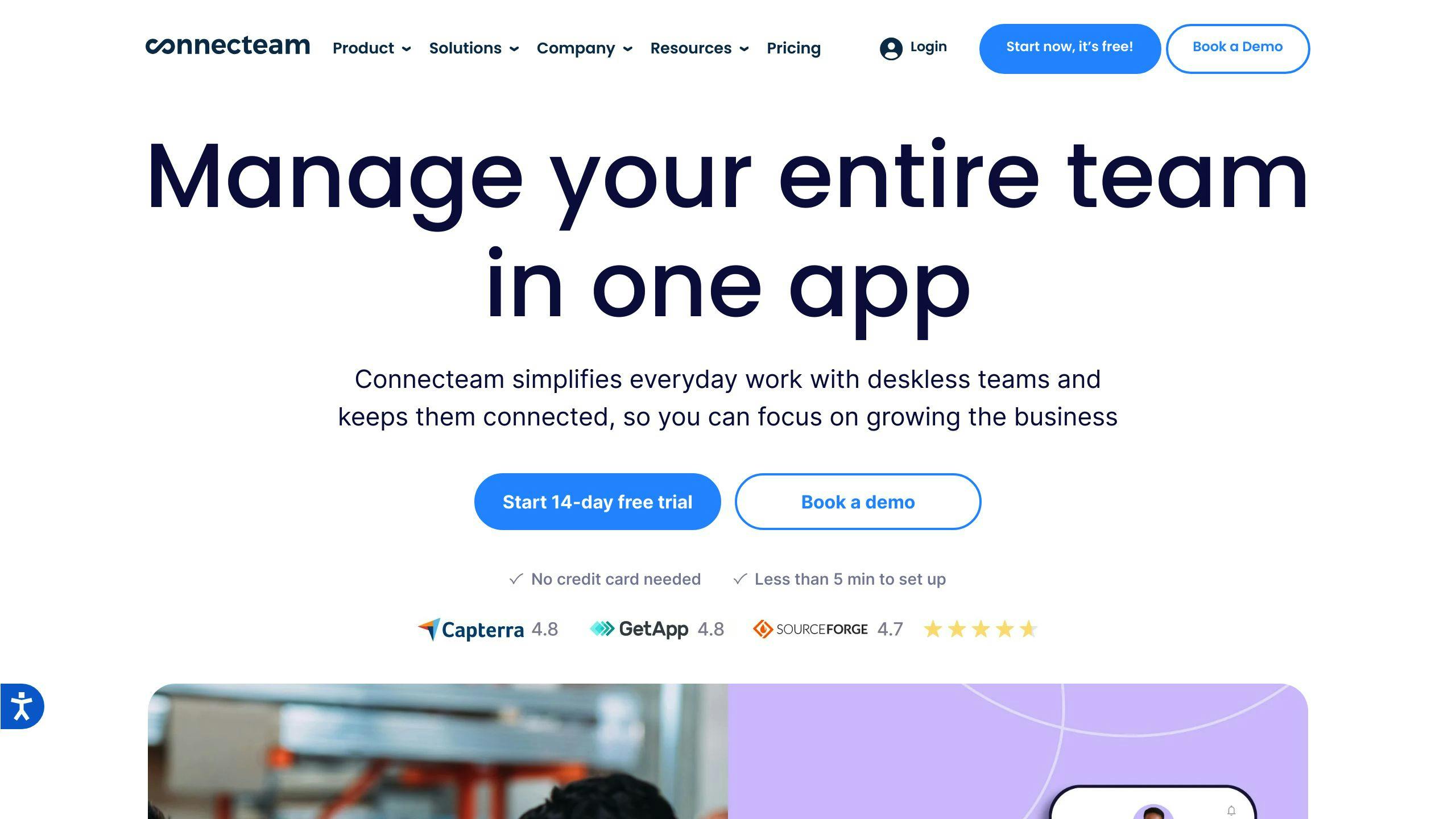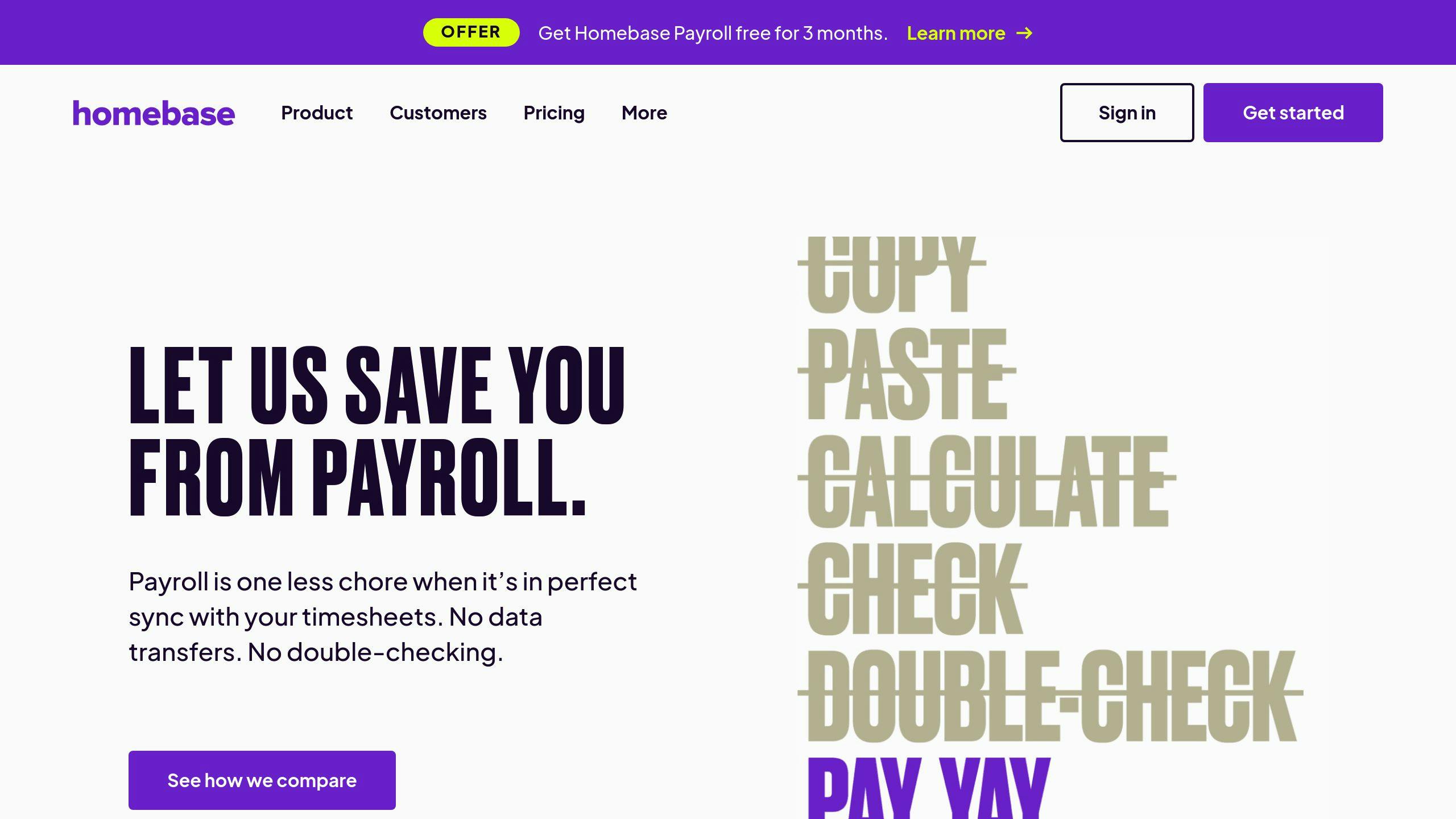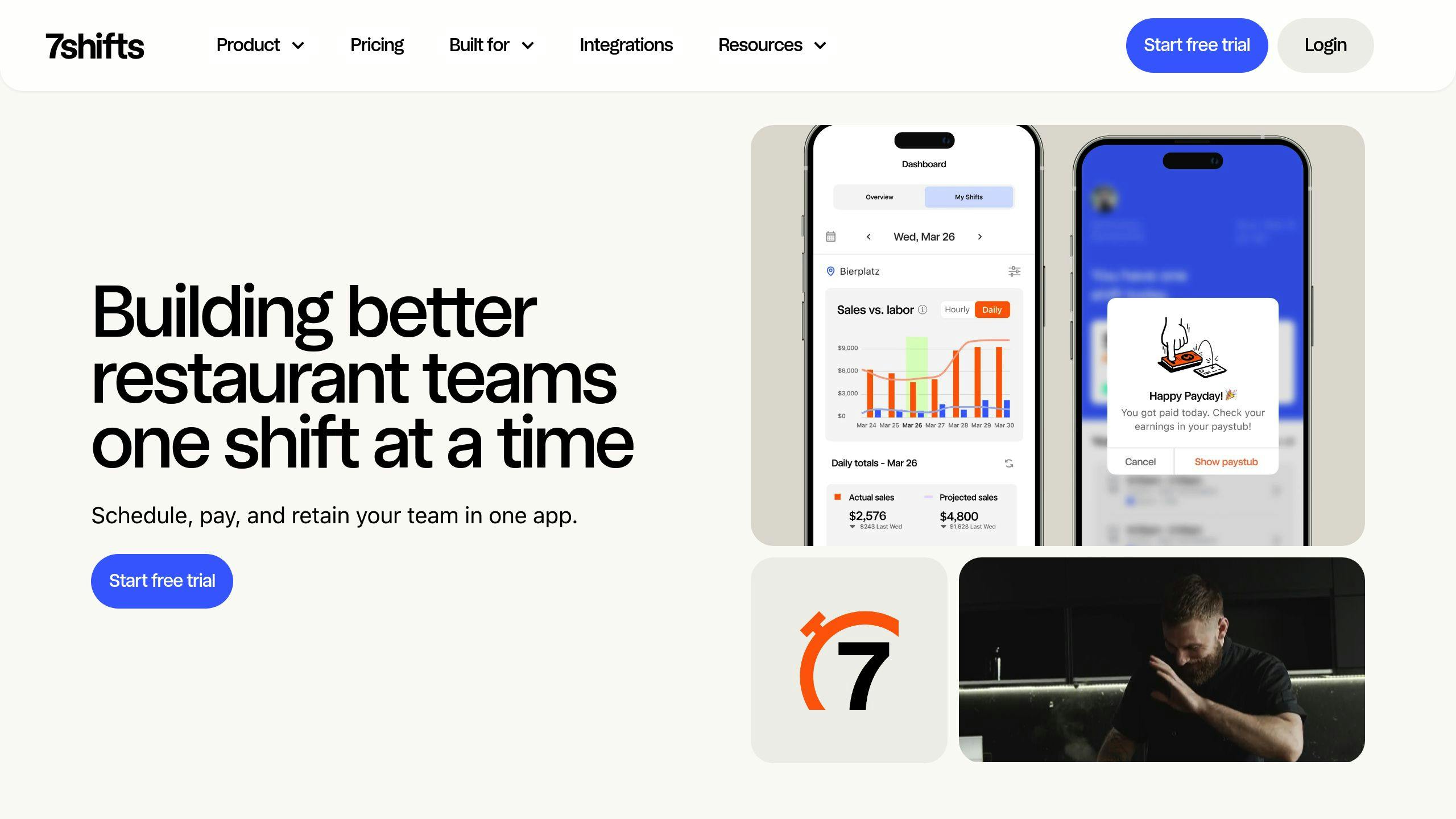9 Best Employee Scheduling Software 2024
Discover the top employee scheduling software for 2024, featuring key features, pricing, and ideal business types to streamline your operations.

Looking for top employee scheduling software? Here's a quick rundown of the best options for 2024:
- Deputy: All-in-one solution with AI scheduling
- When I Work: Great for hourly workers
- Connecteam: Scalable with free option
- Homebase: Ideal for retail and service industries
- Sage HR: Links scheduling with HR functions
- Shiftboard: Handles complex scheduling needs
- 7shifts: Built for restaurants
- QuickBooks Time: Perfect for QuickBooks users
- Planday: Strong in shift planning and communication
Quick Comparison
| Software | Key Features | Pricing | Best For | Mobile App |
|---|---|---|---|---|
| Deputy | AI scheduling, team chat | From £2.50/user/month | All sizes | Yes |
| When I Work | Mobile clock-in, shift swaps | £1.50/location/month | SMBs, hourly workers | Yes |
| Connecteam | Time tracking, HR functions | Free-£159/month | Scalable needs | Yes |
| Homebase | Easy scheduling, payroll | Not specified | Retail, service | Yes |
| Sage HR | Scheduling, performance | Not specified | HR integration | Yes |
| Shiftboard | Advanced tools, compliance | Not specified | Complex industries | Yes |
| 7shifts | Staff management, forecasting | Free-£34.99/month | Restaurants | Yes |
| QuickBooks Time | Time tracking, GPS | From £20 + £8/user/month | QuickBooks users | Yes |
| Planday | Shift planning, communication | Not specified | Retail, hospitality | Yes |
Choose based on your business size, industry, and specific needs. Most offer free trials to test before you commit.
How We Chose the Top 9
We didn't just pick these employee scheduling tools out of a hat. Here's our process:
1. Ease of use
We tested each tool ourselves. Could we set up schedules quickly? Make last-minute changes? The best ones were a breeze for both managers and staff.
2. Features
Basic scheduling? Not enough. We wanted more:
- Real-time updates
- Mobile access
- Payroll integration
- Labour law compliance tools
3. Cost
Good news: You can get solid scheduling software for as little as £0.79 per employee per month. Some even offer team discounts.
4. Industry fit
Retail needs are different from healthcare. We made sure our picks could handle various sectors. For example, in food service, staff need to manage their own availability.
5. User reviews
We didn't just trust the companies. We dug into real user reviews to get the full picture.
6. Support
Schedules can't wait. We favoured platforms with 24/7 support, like Deputy, HotSchedules, and Humanity.
7. Scalability
Whether you have 5 employees or 15,000, these tools can handle it.
8. Integration
The best scheduling software plays nice with other business apps, especially payroll and billing systems.
9. Compliance features
With ever-changing labour laws, we looked for tools that help keep you on the right side of regulations.
9 Best Employee Scheduling Software Options
Let's look at the top employee scheduling software for 2024. We'll cover features, pros and cons, pricing, and ideal business types for each.
1. Deputy

Deputy is a full-featured tool that goes beyond scheduling.
Key features:
- AI-powered scheduling compliance
- Team messaging
- Time off management
Pricing: From £2.50 per user, monthly
Best for: All business sizes wanting a complete solution
Users rate Deputy 4.5 stars. One said: "The mobile app is brilliant for managing operations on the go."
2. When I Work

This tool makes life easier for hourly workers and managers.
Key features:
- Mobile clock-in/out
- Shift swapping
- Time-off requests
- Quick schedule creation
Pricing: Starter plan at £1.50 per location per month
Best for: Small to medium businesses with hourly workers
When I Work has a 90% satisfaction rating from 1,454 reviews.
3. Connecteam

Connecteam offers more than just scheduling.
Key features:
- Time tracking
- Task management
- Employee scheduling
- HR functions
Pricing:
| Plan | Cost | Users |
|---|---|---|
| Free | £0 | Up to 50 |
| Basic | £39/month | First 50 users, £0.50/month each extra |
| Advanced | £79/month | First 50 users, £1.50/month each extra |
| Expert | £159/month | First 50 users, £3/month each extra |
Best for: Businesses wanting a scalable solution with a free option
4. Homebase

Homebase excels in schedule-making and payroll connections.
Key features:
- Easy schedule creation
- Payroll integration
- Time tracking
Best for: Retail and service industries
5. Sage HR

Sage HR combines scheduling with performance tracking.
Key features:
- Shift scheduling
- Performance management
- Leave management
Best for: Businesses linking scheduling with HR
6. Shiftboard

Shiftboard handles complex scheduling needs and rule compliance.
Key features:
- Advanced scheduling tools
- Compliance management
- Reporting and analytics
Best for: Industries with complex scheduling, like healthcare or manufacturing
7. 7shifts

7shifts is built for restaurants.
Key features:
- Staff management
- Sales forecasting
- Team communication
Best for: Restaurants and food service
8. QuickBooks Time

Great for QuickBooks users.
Key features:
- Time tracking
- GPS tracking
- QuickBooks payroll integration
Best for: QuickBooks users wanting seamless integration
9. Planday

Planday offers strong shift planning and staff communication.
Key features:
- Shift planning
- Staff communication
- Time and attendance tracking
Best for: Retail, hospitality, and service industries
Each tool has its strengths. Choose based on your business needs, size, and industry. Try free trials to find your best fit.
Software Comparison Table
We've put together a table comparing 9 top employee scheduling software options. Here's what you need to know:
| Software | Key Features | Pricing | Best For | Mobile App | Drag-and-Drop Scheduling |
|---|---|---|---|---|---|
| Deputy | AI scheduling, team chat, time off | From £2.50/user/month | All sizes | Yes | Yes |
| When I Work | Mobile clock-in, shift swaps | £1.50/location/month | SMBs, hourly workers | Yes | Yes |
| Connecteam | Time tracking, HR functions | Free-£159/month | Scalable needs | Yes | Yes |
| Homebase | Easy scheduling, payroll | Not specified | Retail, service | Yes | Yes |
| Sage HR | Scheduling, performance | Not specified | HR integration | Yes | Yes |
| Shiftboard | Advanced tools, compliance | Not specified | Complex industries | Yes | Yes |
| 7shifts | Staff management, forecasting | Free-£34.99/month | Restaurants | Yes | Yes |
| QuickBooks Time | Time tracking, GPS | From £20 + £8/user/month | QuickBooks users | Yes | Yes |
| Planday | Shift planning, communication | Not specified | Retail, hospitality | Yes | Yes |
All options offer mobile apps and drag-and-drop scheduling. When choosing, think about:
- Your budget
- Workforce size
- Industry needs
- System integration
- Mobile access importance
Many offer free trials or demos. For example, Deputy and 7shifts have sandbox accounts for specific industries.
Fun fact: Workforce scheduling software use jumped 40% from 2014 to 2015. Businesses are catching on to the power of automation!
Important Features to Look For
Choosing the right employee scheduling software can make or break your operations. Here's what you need to focus on:
Auto-scheduling: Algorithms do the heavy lifting, creating schedules based on availability, skills, and laws. It's a massive time-saver.
Shift swapping: Let employees swap shifts without your approval. It's a win-win: they get flexibility, you get less admin work.
Real-time updates: When the schedule changes, everyone should know. Instantly. No more confusion or missed shifts.
Mobile access: Your team's always on the move. They need an app to check schedules, request time off, and clock in from anywhere.
Time and attendance tracking: Keep tabs on who's working when. It makes payroll a breeze.
Reporting and analytics: Good software gives you the dirt on labour costs, overtime, and scheduling patterns. Use it to make smarter decisions.
Here's how some top options stack up:
| Software | Auto-scheduling | Shift swapping | Real-time updates | Mobile app | Time tracking | Reporting |
|---|---|---|---|---|---|---|
| Deputy | Yes | Yes | Yes | Yes | Yes | Yes |
| When I Work | Yes | Yes | Yes | Yes | Yes | Yes |
| 7shifts | Yes | Yes | Yes | Yes | Yes | Yes |
| Connecteam | Yes | Yes | Yes | Yes | Yes | Yes |
Pricing? It's all over the map. Deputy starts at £2.50 per user per month. 7shifts ranges from free to £34.99 monthly.
Scheduling Needs in Different Industries
Employee scheduling isn't one-size-fits-all. Let's look at how it varies across healthcare, retail, and hospitality.
Healthcare
Healthcare needs 24/7 coverage. This means:
- Complex shift patterns
- Skill-based scheduling (mix of nurses, doctors, specialists)
- Compliance with labour laws and union agreements
- On-call rotations for emergencies
Retail
Retail scheduling is about matching staff to customer demand:
- Handling seasonal rushes
- Managing multiple locations
- Balancing full-time and part-time staff
The rise of omnichannel retail adds new twists. A McKinsey study found 75% of U.S. consumers tried new shopping behaviours during the pandemic. Now retailers need to schedule for:
- In-store service
- Online order fulfilment
- Click-and-collect
Hospitality
Hospitality faces its own scheduling challenges:
- Unpredictable demand
- Mix of full-time, part-time, and seasonal workers
- Coverage for various roles (front desk, housekeeping, food service)
Different approaches are used:
| Approach | Example |
|---|---|
| Fixed schedules | Cruise ships |
| Rotating shifts | Restaurants |
| On-demand | Catering companies |
| Self-scheduling | Housekeeping staff |
Choosing the Right Software
When picking scheduling software, consider:
- Healthcare: Compliance features and skill-based scheduling
- Retail: Multi-location scheduling and demand forecasting
- Hospitality: Flexibility for changes and easy shift swapping
The right software matters. From 2014 to 2015, workforce scheduling software adoption jumped 40%. This shows how important tailored solutions are becoming across industries.
Setting Up and Connecting the Software
Setting up employee scheduling software can transform your business. But it's not always easy. Here's how to do it right:
1. Pick the right tool
Make sure the software fits your needs. If you're in healthcare, you'll want things like skill-based scheduling and compliance features.
2. Plan it out
Create a timeline for setup, training, and full use. Get key people involved to ensure everyone's on board.
3. Move your data
Transfer your existing employee info, schedules, and other important data to the new system. This step is key for a smooth switch.
4. Connect with other systems
Linking your new scheduling software with HR and payroll can be tricky. Here are some common issues and fixes:
| Problem | Fix |
|---|---|
| Data sync errors | Use matching data formats across systems |
| Duplicate entries | Create unique IDs for each employee |
| Incomplete transfers | Check that all needed fields are correctly mapped |
| Security worries | Use proper access controls and encrypt data |
5. Train your team
Teach all staff who'll use the system. Cover basics like viewing schedules, asking for time off, and swapping shifts.
6. Test it out
Before going all in, try it with a small group. Use their feedback to make improvements.
7. Offer ongoing help
Have someone ready to answer questions and solve problems as they come up.
Why bother? Manual scheduling eats up 20% of a manager's time and can lead to 174% more turnover due to mistakes. Good software fixes that.
What's Next for Scheduling Software
The future of employee scheduling software is about to shake things up. Here's what's coming:
AI-driven scheduling
AI and machine learning are changing the game for shift planning. Take ShiftLink, for example. This platform uses AI to:
- Guess staffing needs based on past data
- Match shifts to employee skills and availability
- Show managers how likely shifts are to be filled
This smart approach helps businesses avoid having too many or too few staff on hand.
Flexible scheduling options
Workers want more control over their schedules. Future tools will likely offer:
- Self-service scheduling
- Shift choice and splitting
- Easy shift swaps
People want flexibility. In fact, 86% of workers across industries would switch jobs for better schedule options, according to PageGroup's 2023 Talent Trends Report.
Fair shift allocation
Fair scheduling is becoming a big deal. New tech will focus on:
- Unbiased shift distribution
- Following labour laws
- Balancing what employees want with what businesses need
Travis Shipley from Shiftboard says: "Workforce scheduling is changing. It's driven by new employee expectations, tech advances, and a focus on fairness and worker well-being."
Integration with other systems
Future scheduling software will play nice with:
- HR systems
- Payroll platforms
- Time and attendance tracking
This will cut down on admin work and reduce errors.
Mobile-first approach
As more people work on the go, scheduling software will focus on mobile access. Employees will be able to:
- Check schedules
- Ask for time off
- Swap shifts
All from their phones.
These changes in scheduling software will make managing workers easier, fairer, and more employee-friendly. Businesses that jump on board early could have an edge in attracting and keeping talent.
Wrap-Up
Picking the right employee scheduling software can make a big difference for your business. We've looked at the top 9 options for 2024, and each has its own strengths.
Here's a quick list of our top picks:
- Deputy
- When I Work
- Connecteam
- Homebase
- Sage HR
- Shiftboard
- 7shifts
- QuickBooks Time
- Planday
When you're choosing, think about:
- What your business really needs
- How easy it is to use
- If it works with your other tools
- If it can grow with your business
- If it works on mobile
Bad software can be a real problem. A study found that 25% of employees thought about quitting because of poor software. And 1 in 8 actually did quit.
To make a good choice:
- Try out free trials
- Read what other users say
- Make a list of features you must have
- Think about what you'll need in the future, not just now
